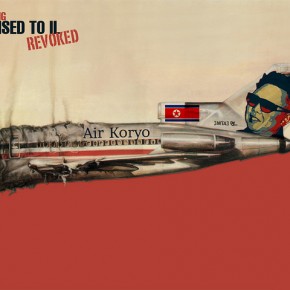When newspapers first disclosed that one percent of the US population was imprisoned or on probation, credible reports allege that prosecutors at Maricopa County Attorney’s office celebrated with cheers and calls to “Go for two percent!” That is what team spirit looks like in this age of mass incarceration.
Arizona is a leader in the invention of expanding imprisonment and ever-more punitive prison life. The state’s political class, both Republicans and Democrats, competed with each other on who could posture best as ‘tough on crime.’ Other states looking for a ‘hard guy’ law-and-order image for the past forty years have looked toward Arizona for the latest ideas. California’s infamous Pelican Bay supermax prison, for example, is a copy of the CB-6 supermax unit at Florence State Prison. Both were designed by the same Phoenix architectural firm. Arizona legislators were in the forefront of the successful national campaign to shut down post-secondary education programming in prisons.
Mona Lynch’s Sunbelt Justice: Arizona and the Transformation of American Punishment (Stanford University Press, 2009) makes a compelling case that the political urges behind these developments were late-arriving. Until the 1970s, Arizona, governed by its traditional governmental frugality, restrained its use of imprisonment in criminal justice and remained behind most states in incarceration rates. Following bureaucratic consolidation of its Department of Corrections in 1968, and the political adoption of Nixonian and then Reaganite law-and-order ideology, the state’s incarceration rate soared.
Today Arizona has one of the highest incarceration rates in the United States, a country that easily leads the world on this statistical measure. While the comparison is not tenable on grounds of due process, conditions, or purposes, the United States today has a higher incarceration rate than those of “Communist prison-states” denounced in Cold War-era rhetoric. What such news of statistical arrival does not address is the impact of regional culture on US prison systems. Since its origins the United States has been the construction of regional social and political cultures within a federal framework. What Sunbelt Justice provides is an understanding of the influence of the American Southwest on the extraordinary elevation of incarceration as the predominant vehicle for criminal justice in the United States.
The political history of prisons in Arizona begins with a handful of disparate institutions when statehood commenced in 1912. A couple years before statehood Florence State Prison, an Auburn-style institution with tiered cell blocks, replaced the Yuma territorial prison that Elmore Leonard was to romanticize in his 1953 story Three-Ten to Yuma. Florence remained, as it does today within a vastly expanded state prison system, Arizona’s central symbol of incarceration and houses its execution chamber. The prison represents a confluence of Southern plantation-style prisons that emphasized agriculture together with eastern ‘big-house’ warehouse-style prisons. Frank Eyman, who served as Florence warden from 1955-72 and for whom the Eyman complex is named, became the charismatic figure who balanced nominal modernization with old-time, hard-time values. Bureaucratization beginning with the 1968 establishment of a consolidated Department of Corrections – possibly the last US state to do so – provided a then-unrealized stepping-stone toward mass incarceration.
A brief series of reform-minded directors of the Department of Corrections ensued in the 1970s and early 1980s, but paradoxically their modernization and institution-building created a foundation for a mass incarceration regime that dismissed reform attempts. By the 1980s what Lynch calls the “post-rehabilitative model” of incarceration had taken hold of the system. A “post-rehabilitative” prison system has given up all pretense of rehabilitation toward re-entry and focuses on population management. That population undergoes rapid and continued expansion through media-manufactured crime scares, sentencing ‘reforms’ that lengthen prison terms, closing back-end early release and parole options, and drastic cuts or complete cessation of education programs. A prison becomes a human warehouse. The political charge becomes to build more, larger and cheaper warehouses to handle an ever-growing inmate population deemed to have innate criminality unsusceptible to change.
Subsequent Department of Corrections administrations have all participated in the expansion of the state’s prison system, even during those years shaped by former governor Janet Napolitano (now head of the US Federal Government’s Department of Homeland Security) and her reform-minded director Dora Schriro. Napolitano, for all her relative liberalism in terms of Arizona politics driven by far-right cranks, remained a hard-liner on crime, punishment, and prisons. The Department of Corrections appropriation has today become the largest element of Arizona’s state budget.
Prison funding has remained steady even while education, health, and social services – already poorly funded – have absorbed massive cut-backs. In the past three years the state university where I teach has laid off well over two thousand teachers and staff; during the same period, the Department of Corrections has increased its staffing by several hundred, with more than 10,000 full-time employees at present. The state’s public services as a whole have adopted a post-rehabilitative model, not only its prisons. Arizona gets what it pays for – prisons at the top of the league tables and schools at the bottom.
Pursuing legislative demands for cost-cutting by any means possible Arizona has been leading the trend toward private prisons, the resurrection of a discredited concept that originated in the eighteenth and nineteenth centuries. This development flies in the face of international legal recognition of the non-delegable public responsibility of prison custody, and the structural conflict between ensuring basic human dignity and profit maximization by private prison corporations. A new breed of private prison corporations has emerged in the US that adopt an Orwellian ideological mix of cost efficiency, re-entry success claims, and educational provision. In a society that relies heavily on private contractor mercenaries for its overseas military missions, it should come as no surprise that the paramilitary work of prison guards is being privatized too. One persistent idea of Arizona privatization efforts has been the proposed construction of private-contractor prisons over the border in Mexico to hold inmates who are not US citizens at lower cost. Mexican public opinion rejects the idea as yanqui arrogance, but it nonetheless gets raised regularly in the Arizona legislature.
Lynch contributes an excellent and much-needed political history of Arizona prisons. Her study employs extensive archival work, media coverage, and interviews to good effect – as far as it goes. What this study does not do is incorporate the voices of prison inmates or staff. For this reason the study remains incomplete, a partial story that hopefully will be expanded in future studies. Official documents contain only the expressions of political and administrative elites, not the political mass. Prison systems represent an expression of diverse and conflicted political forces. Incarceration and disenfranchisement of inmates convicted of felonies limits their means of political expression but does not separate them from the external body politic or make them meaningless non-participants in internal prison policy. Social histories of prisons that do not comprehend prisoners and staff as central actors render them invisible. Histories that recognize policy only as the domain of legislative, executive or administrative policy-makers need a more popular scope.
Photograph courtesy of Joseph Voves. Published under a Creative Commons license.





